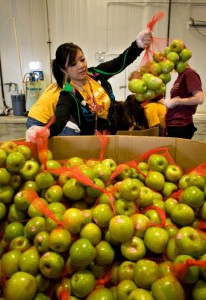OTTAWA (CUP)—HungerCount, an annual study of food banks and food programs in Canada, found that in 2011, an average of 851,000 individuals were assisted by food banks each month, and four percent of them were postsecondary students.
“Four percent means that there are more than 34,000 students every month that are going to a food bank for help,” says Food Banks Canada executive director Katharine Schmidt.
“It’s a group of people in this country that is important to us,” says Schmidt. “Educating our young people and preparing people for their futures is important, so to know that we’ve got about 34,000 Canadians who are walking into or getting help from a food bank each and every month, who are post-secondary students, is a large number.”

Since 2008, overall food bank use in Canada has increased by 26 percent.
“The reality is that someone using a food bank could be your neighbor, it could be a friend, it could be a family member, it could be somebody you sat next to on the bus on the way to school; really, it could be just about anyone,” says Schmidt. “The reason people end up at food banks is because their income is not high enough to cover the cost of basic needs.”
Two percent of those receiving assistance from food banks cite student loans or scholarships as their primary source of income. The cost of housing, job quality, and accessibility to employment insurance are all barriers students face, according to Schmidt.
Food bank use has increased on campuses as well. Based on numbers from the Student Federation of the University of Ottawa (SFUO), the number of people using their food bank has increased from 259 in 2007, to 3,534 in 2011.
“It’s amazing because 10–15 years ago, there weren’t campus food banks, and the majority of campuses now have food banks,” observes Schmidt. “It’s interesting how they’re helping to service those that need help with some really creative ways to do it so that there isn’t a stigma, and it allows students to get some help with a lot of dignity.”
Beyond being a student, there’s no set of eligibility criteria to access the SFUO food bank service.
“We ask that in order for students to have access to the food bank they produce a student number; it’s really simple. We don’t ask for a lot of details or a lot of specifications, just that they can prove that they’re a student here, or that they’re an employee,” explains Chris Hynes, SFUO food bank employee.
Hynes and his coworkers are currently collecting information about who accesses the food bank service on their campus. They have found that students with dependents are more likely to be regular clients.
“Students shouldn’t have to choose,” says Hynes, “between paying tuition, paying rent, and buying food.”
